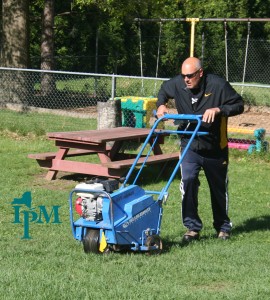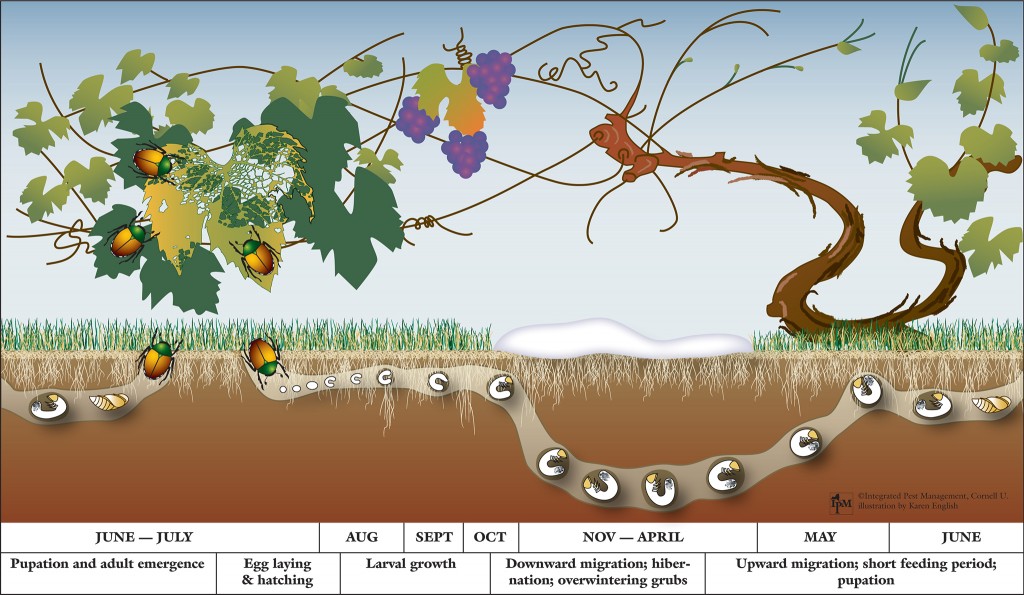Cutting grass roots to the quick — that’s a grub’s stock in trade. But pesticides cost money and time — let alone potential health hazards, whether to ecosystems or us. Cutting grubs to the quick? Now, there’s an idea.

Groundskeepers and savvy homeowners use aerators with their sharp tines to break up hard, compacted soil, letting life-giving oxygen and water deeper into the earth. But those tines have another function, though not by design. They’re like tiny spears, meaning that a grub in the wrong place at the wrong time is a goner. (Aerators can be rented.. In the NY Capital region, I am able to rent an aerator at my local garden store for $40 for four hours and $80 a day. To find one in your area, try Googling: aerator rental “your town”).

Research at the State University of New York at Delhi has shown that yes, turfgrass aerators can lower grub populations, sometimes as much as 90 percent — depending, of course, on conditions that vary from site to site and year to year. Building on that, NYS IPM-funded research at SUNY Delhi looked at which cultivator designs do best against grubs.
Results? All aerators can cut grub populations — though the old standard hollow-core aerators did best in these trials. And it’s an inexpensive tactic if you have the equipment. With this information in hand, you can plan your aerate with grub management in mind. Ideally you’d time a tactic like this for when grubs are big enough to easily impale, yet not so big they’ve already dug deep to survive the winter.
So should you get punchy? Our video shows you how to assess your lawn and scout for grubs. If you find 10 grubs per square foot, now is the time! Grubs are pretty big and still close to the surface in late August so aerating might be just the ticket.
For more information, visit www.nysipm.cornell.edu/whats_bugging_you/grubs/default.asp and www.nysipm.cornell.edu/publications/grubs.